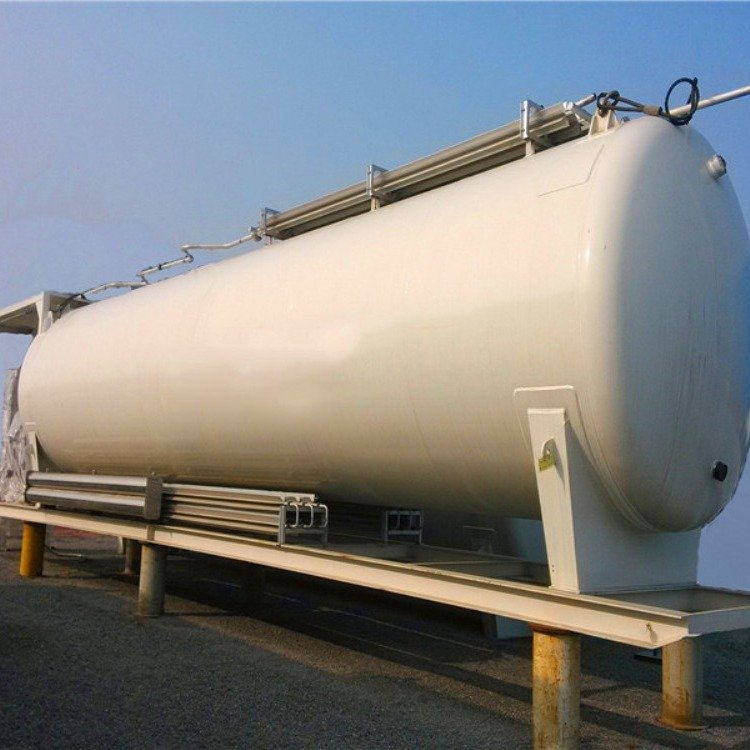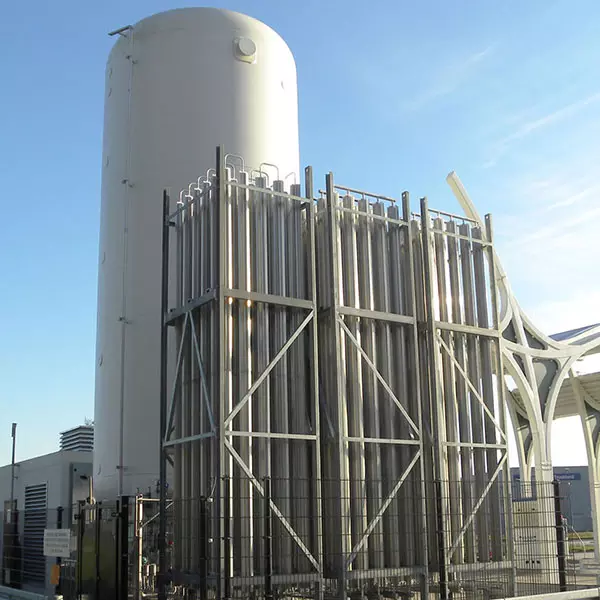Core Value and Implementation Essentials of Pre-cooling
In LNG terminal operations, pre-cooling is a critical step for ensuring the safe operation of natural gas storage tanks. Its core value manifests in three key aspects:
Temperature Adaptation Management: Gradual cooling releases material deformation stresses, preventing pipeline cracks or structural damage to tanks caused by sudden temperature changes.
System Performance Validation: Tests the reliability of cryogenic materials under extreme conditions, evaluates the impact of pipeline cold shrinkage on support structures, and ensures valve sealing performance meets standards.
Safety Barrier Establishment: Creates a stable cryogenic environment foundation for subsequent large-scale LNG storage, reducing operational risks.

In-Depth Analysis of Mainstream Precooling Methods
1.Liquid Nitrogen-LNG Combined Precooling Method: A Balanced Solution for Cost and Safety Implementation Process:
Phase 1: Liquid Nitrogen Precooling (-120 to -110°C)
Initially cools unloading pipelines and storage tanks using liquid nitrogen, strictly controlling cooling rates (recommended ≤2°C/min) to prevent thermal stress concentration.
Phase 2: LNG Enhanced Cooling
When system temperature reaches -110°C, switches to LNG for deep cooling, achieving uniform temperature reduction via top spray atomization devices.
Technical Advantages:
Cost Optimization: Liquid nitrogen costs approximately one-third of LNG, reducing pre-cooling expenses by over 40%.
Enhanced Safety: The non-flammable nature of liquid nitrogen significantly lowers fire risks, making it ideal for high-security zones.
Controllable Operation: Staged cooling facilitates real-time temperature monitoring and timely adjustment of cooling parameters.
Applicable Scenarios:
Newly constructed LNG receiving terminals
Industrial zones with stringent safety standards
Projects with limited budgets requiring long-term operational cost control

2.LNG (Including BOG) Direct Pre-cooling Method: Resource-Efficient Solution
Implementation Process:
Phase 1: BOG Pre-cooling Utilizes LNG vaporization gas (BOG) to pre-cool pipelines and storage tanks, with focused monitoring of BOG flow rate and temperature matching.
Phase 2: LNG Deep Cooling
When system temperature reaches -120°C, inject LNG via atomized spray devices to achieve final cooling.
Technical Features:
Resource Integration: Directly utilizes on-site LNG resources, reducing reliance on external procurement.
Seamless Operation: Integrated process design suitable for highly automated terminals.
Cost Considerations: Consumes approximately 15%-20% of LNG inventory, requiring resource utilization trade-offs.
Applicable Scenarios:
Expansion projects for existing LNG receiving terminals
Coastal regions with abundant resources
Emergency situations requiring rapid pre-cooling
Industry Trends and Innovation Directions
Intelligent Pre-cooling Systems: Integrate IoT sensors and AI algorithms to dynamically optimize cooling parameters.
Green Pre-cooling Technologies: Explore renewable energy sources (e.g., solar power) to drive liquid nitrogen production, reducing carbon footprint.
Modular Pre-cooling Solutions: Develop rapidly deployable pre-cooling units to shorten project timelines.
By scientifically selecting pre-cooling methods, rigorously implementing process controls, and continuously optimizing operational strategies, LNG receiving terminals can achieve dual objectives of safety and efficiency. Excellence Gas Equipment Co., Ltd. is a professional provider of cryogenic gas equipment solutions. For any inquiries, please contact us.

